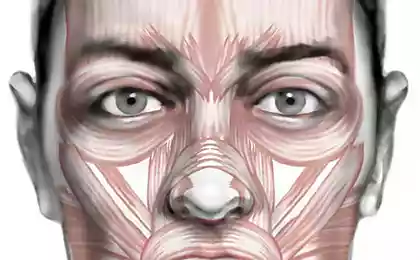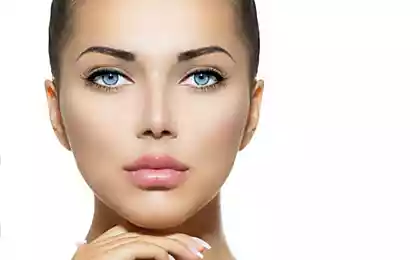443
Olives are heart-healthy, but the sodium must be washed off
The oval fruit of the olive tree grow on the medium height trees. Its origin is a plant runs from the Mediterranean. For centuries they were the main diet of the peoples of the Mediterranean coast. Botany'll take the olives to the family Oleaceae, genus Olea. Evergreen olive trees with gnarled trunks, with sagittate leaves. Olive trees grow slowly, their life span is 500 years. Their height can reach 16 meters. It should be noted that olives can not boast of a high content of vitamin C. Their useful qualities must be different.

They grow in areas where no frost, preferring dry, well-drained soil. The tree begins to bear fruit, reaching 3-4 years of age. In some cases, more time is needed in order to start to harvest olives. Olive trees bloom in the spring. From flowers to fly formed small round or oval green fruits.
It should be noted that black olives (olives) is a Mature and green — immature. And those and others are used in the food industry and are not different fruits. Color depends on maturity.
It is important to note that raw olives are used and do not require treatment, because they contain a bitter component oleuropein (oleuropein).
Use olives for health

The olives are traditionally considered as very healthy food. They not only provide energy but also contain appreciable amounts of plant antioxidants, minerals, phytosterols and vitamins.
Olives are moderately high in calories. Their energy value is 115 calories per 100 grams. Calories come mainly from fat. While olives contain healthy fats in the form of monounsaturated fatty acids such as oleic (18:1) and palmitoleic (16:1) acids, which help to reduce the level of LDL ("bad cholesterol") and raise "good cholesterol" (high density lipoprotein). Studies have shown that the Mediterranean diet rich in monounsaturated fatty acids helps to prevent coronary artery disease and stroke, providing a healthy level of lipids in the blood.
In olives also contain phenolic compounds tyrosol — oleuropein (oleuropein) and oleocanthal (oleocanthal). These connections give the olives their bitter and pungent taste. Oleocanthal, oleuropein and their derivatives — hydroxytyrosol is the most powerful natural antioxidants. Together with vitamin E and carotenoids, they play a vital role in combating cancer, inflammation, coronary artery disease, degenerative diseases of the nervous system, diabetes and other diseases.
Studies show that oleocanthal has anti-inflammatory qualities, similar to "Ibuprofen". Sredizemie diet that includes olives, may partly be the reason for reduced incidence of coronary arterial disease.
Olives in appreciable amounts contain vitamin E. In 100 grams of canned olives contains 1.65 milligrams of this vitamin, which is 11% of the recommended daily norms of consumption of alpha-tocopherol. Vitamin E is a powerful lipid soluble antioxidant, required for maintaining the integrity of cell membrane of mucus membranes and skin by protecting from harmful free radicals.
In addition, the olives also contain appreciable amounts of minerals such as calcium, copper, iron, manganese and zinc. Olives also contain small amounts of B-complex vitamins — Niacin and Pantothenic acid, and choline.
Olive oil is considered as one of the healthiest edible oils since it contains less saturated fat. Olive oil is characterized by a recommended ratio (8:1) content of essential fatty acids — linoleic (omega-6) and linolenic (omega-3).
Caution
Olives are considered a safe food product. While some people may experience an allergic reaction to the lye (caustic soda). Lye and salt, which process the olives contain a lot of sodium, more than the recommended amount to eat. Place olives in a bowl and rinse them several times before eating to remove excess salt and liquor.
Nutritional value of olives
In parentheses are the percentage of the daily allowance. Nutritional value is based on 100 grams of canned ripe olives according to information from the Ministry of agriculture of the USA, shown in the resource Nutrition And You.
General information:
energy value 115 kcal (5,75%);
carbohydrates — 6.26 grams (5%);
protein — 0.84 grams (1,5%);
fats — 10.68 grams (50%);
fiber, part of the food — 3.2 grams (8%).
Vitamins:
folic acid (vitamin B9) — 0 micrograms (0%);
nicotinic acid (vitamin B3) — 0.037 milligram ( Pantothenic acid — 0.015 milligrams ( pyridoxine (vitamin B6) — 0.009 milligrams (~0%);
Riboflavin (vitamin B2) — 0 milligrams (0%);
thiamine (vitamin B1) — 0.003 milligram (~0%);
vitamin a, which very much is contained in dandelion — 403 international units (IU, IU) — 13,5%;
vitamin C is 0.9 milligrams (1%);
vitamin E — 1.65 milligrams (11%);
vitamin K, an incredibly rich source of which is sage — 1.4 micrograms (1%).
Electrolytes:
sodium 735 mg (49%);
potassium — 8 mg (17%).
Minerals:
calcium — 88 mg (9%);
copper — 0,251 milligrams (28%);
iron — 3.30 milligram (41%);
magnesium is 4 milligrams (1%);
manganese — 0.020 milligram (1%);
phosphorus 3 milligrams ( selenium — 0.9 micrograms (1,5%);
zinc 0.22 mg (2%).
Phytonutrients:
beta-carotene (ß-carotene), which is rich in carrots — 237 micrograms;
beta-cryptoxanthin (ß-cryptoxanthin) — 9 micrograms;
lutein-zeaxanthin — 510 micrograms;
phytosterol — 221 milligrams.
Lipids (fatty acids):
just saturated — 1,415 grams;
total monounsaturated — 7,888 grams
total polyunsaturated — 0,911 grams
Did you know before that black and green olives are not different fruits and differ only in degree of maturity? published
P. S. And remember, only by changing their consumption — together we change the world! © Join us at Facebook , Vkontakte, Odnoklassniki
Source: hi-news.ru

They grow in areas where no frost, preferring dry, well-drained soil. The tree begins to bear fruit, reaching 3-4 years of age. In some cases, more time is needed in order to start to harvest olives. Olive trees bloom in the spring. From flowers to fly formed small round or oval green fruits.
It should be noted that black olives (olives) is a Mature and green — immature. And those and others are used in the food industry and are not different fruits. Color depends on maturity.
It is important to note that raw olives are used and do not require treatment, because they contain a bitter component oleuropein (oleuropein).
Use olives for health

The olives are traditionally considered as very healthy food. They not only provide energy but also contain appreciable amounts of plant antioxidants, minerals, phytosterols and vitamins.
Olives are moderately high in calories. Their energy value is 115 calories per 100 grams. Calories come mainly from fat. While olives contain healthy fats in the form of monounsaturated fatty acids such as oleic (18:1) and palmitoleic (16:1) acids, which help to reduce the level of LDL ("bad cholesterol") and raise "good cholesterol" (high density lipoprotein). Studies have shown that the Mediterranean diet rich in monounsaturated fatty acids helps to prevent coronary artery disease and stroke, providing a healthy level of lipids in the blood.
In olives also contain phenolic compounds tyrosol — oleuropein (oleuropein) and oleocanthal (oleocanthal). These connections give the olives their bitter and pungent taste. Oleocanthal, oleuropein and their derivatives — hydroxytyrosol is the most powerful natural antioxidants. Together with vitamin E and carotenoids, they play a vital role in combating cancer, inflammation, coronary artery disease, degenerative diseases of the nervous system, diabetes and other diseases.
Studies show that oleocanthal has anti-inflammatory qualities, similar to "Ibuprofen". Sredizemie diet that includes olives, may partly be the reason for reduced incidence of coronary arterial disease.
Olives in appreciable amounts contain vitamin E. In 100 grams of canned olives contains 1.65 milligrams of this vitamin, which is 11% of the recommended daily norms of consumption of alpha-tocopherol. Vitamin E is a powerful lipid soluble antioxidant, required for maintaining the integrity of cell membrane of mucus membranes and skin by protecting from harmful free radicals.
In addition, the olives also contain appreciable amounts of minerals such as calcium, copper, iron, manganese and zinc. Olives also contain small amounts of B-complex vitamins — Niacin and Pantothenic acid, and choline.
Olive oil is considered as one of the healthiest edible oils since it contains less saturated fat. Olive oil is characterized by a recommended ratio (8:1) content of essential fatty acids — linoleic (omega-6) and linolenic (omega-3).
Caution
Olives are considered a safe food product. While some people may experience an allergic reaction to the lye (caustic soda). Lye and salt, which process the olives contain a lot of sodium, more than the recommended amount to eat. Place olives in a bowl and rinse them several times before eating to remove excess salt and liquor.
Nutritional value of olives
In parentheses are the percentage of the daily allowance. Nutritional value is based on 100 grams of canned ripe olives according to information from the Ministry of agriculture of the USA, shown in the resource Nutrition And You.
General information:
energy value 115 kcal (5,75%);
carbohydrates — 6.26 grams (5%);
protein — 0.84 grams (1,5%);
fats — 10.68 grams (50%);
fiber, part of the food — 3.2 grams (8%).
Vitamins:
folic acid (vitamin B9) — 0 micrograms (0%);
nicotinic acid (vitamin B3) — 0.037 milligram ( Pantothenic acid — 0.015 milligrams ( pyridoxine (vitamin B6) — 0.009 milligrams (~0%);
Riboflavin (vitamin B2) — 0 milligrams (0%);
thiamine (vitamin B1) — 0.003 milligram (~0%);
vitamin a, which very much is contained in dandelion — 403 international units (IU, IU) — 13,5%;
vitamin C is 0.9 milligrams (1%);
vitamin E — 1.65 milligrams (11%);
vitamin K, an incredibly rich source of which is sage — 1.4 micrograms (1%).
Electrolytes:
sodium 735 mg (49%);
potassium — 8 mg (17%).
Minerals:
calcium — 88 mg (9%);
copper — 0,251 milligrams (28%);
iron — 3.30 milligram (41%);
magnesium is 4 milligrams (1%);
manganese — 0.020 milligram (1%);
phosphorus 3 milligrams ( selenium — 0.9 micrograms (1,5%);
zinc 0.22 mg (2%).
Phytonutrients:
beta-carotene (ß-carotene), which is rich in carrots — 237 micrograms;
beta-cryptoxanthin (ß-cryptoxanthin) — 9 micrograms;
lutein-zeaxanthin — 510 micrograms;
phytosterol — 221 milligrams.
Lipids (fatty acids):
just saturated — 1,415 grams;
total monounsaturated — 7,888 grams
total polyunsaturated — 0,911 grams
Did you know before that black and green olives are not different fruits and differ only in degree of maturity? published
P. S. And remember, only by changing their consumption — together we change the world! © Join us at Facebook , Vkontakte, Odnoklassniki
Source: hi-news.ru























